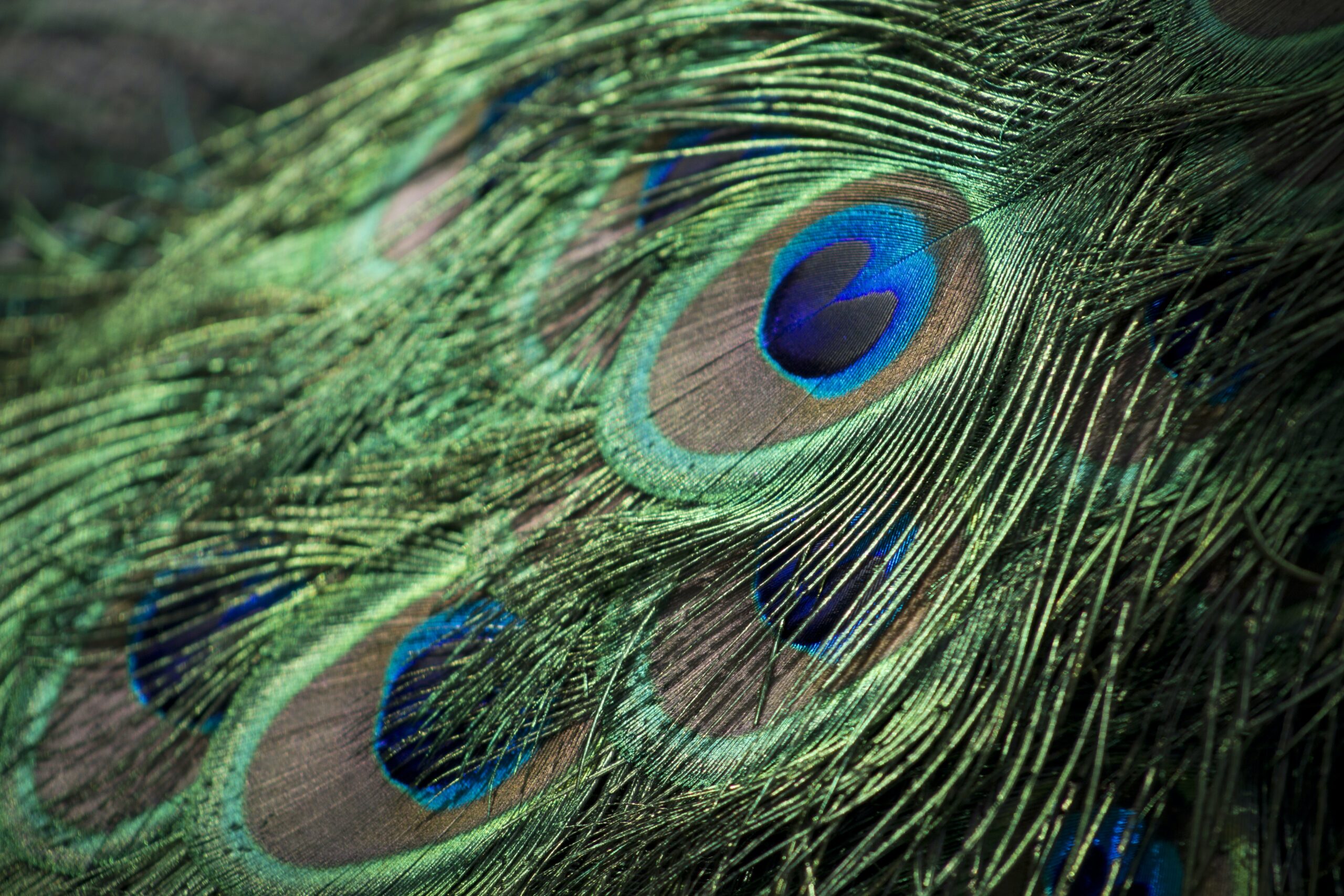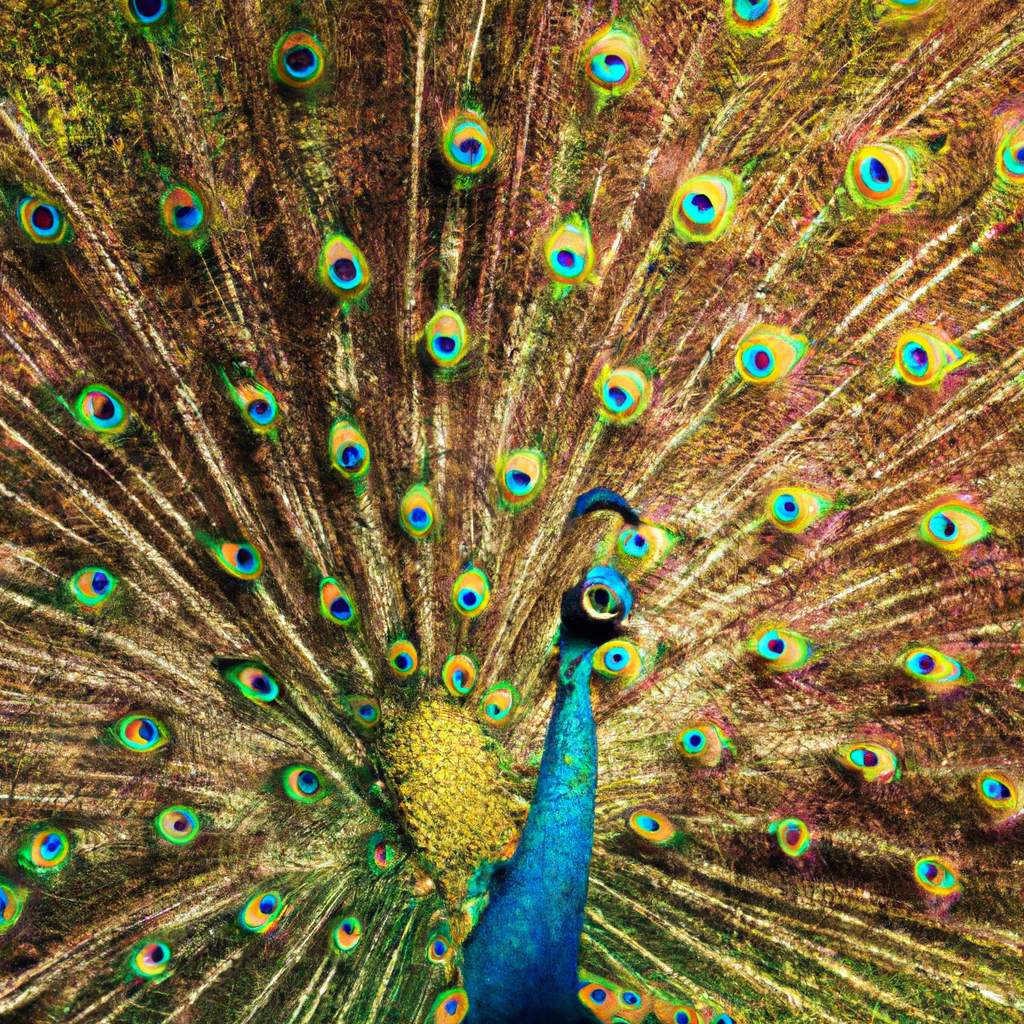The Indian Peafowl, scientifically known as Pavo cristatus, is a majestic and colorful bird native to the Indian subcontinent. With its striking vibrant blue and green feathers, intricately patterned plumage, and a long mesmerizing train adorned with dramatic eye-shaped spots, the Indian Peafowl is a true wonder of nature. Not only does its physical appearance captivate the beholder, but its graceful and elaborate courtship displays also make it an enchanting species to observe. Despite its ornamental beauty, the Indian Peafowl plays a vital role in the ecosystem, contributing to seed dispersal and insect control. Join us as we delve into the fascinating world of the Indian Peafowl and uncover the hidden aspects of this iconic bird.

This image is property of images.unsplash.com.
Taxonomy
Kingdom
The Indian Peafowl belongs to the Animal kingdom (also known as the Kingdom Animalia). It is a multicellular organism that does not possess chloroplasts or cell walls.
Phylum
Within the Animal kingdom, the Indian Peafowl falls under the Chordata phylum. This phylum includes animals that possess a notochord, a dorsal hollow nerve cord, pharyngeal slits, and a post-anal tail during some stage of their development.
Class
The Indian Peafowl belongs to the Aves class, which consists of birds. Birds have feathers, lay hard-shelled eggs, and possess beaks or bills.
Order
The Indian Peafowl falls into the Galliformes order. This order comprises birds that are typically ground-dwelling and include chickens, turkeys, quails, pheasants, and guinea fowls.
Family
Within the Galliformes order, the Indian Peafowl is a member of the Phasianidae family. This family includes birds known for their terrestrial habits and colorful plumage.
Genus
The Indian Peafowl belongs to the Pavo genus. The genus Pavo is known for including species that are native to Asia.
Species
The specific species of the Indian Peafowl is Pavo cristatus. “Cristatus” is derived from the Latin word meaning “crested,” referring to the distinctive crests found on the bird’s head.
Physical Description
Size
The Indian Peafowl is a large bird, with males typically measuring up to 230 centimeters in length, from the beak to the end of their long train feathers. Females are slightly smaller, measuring around 94 centimeters in length.
Feathers
Feathers cover the entire body of the Indian Peafowl, which aid in flight, insulation, and display. The feathers consist of a shaft, barbs, and barbules, giving them a structured and intricate appearance.
Coloration
The plumage of the Indian Peafowl is strikingly beautiful. The male, known as a peacock, possesses vibrant, iridescent blue-green feathers on its head, neck, and breast. Its back and upper tail coverts are a rich coppery brown, while the lower tail coverts are adorned with long, iridescent train feathers displaying an array of colorful “eyes.” In contrast, the female, known as a peahen, has a more subdued brown coloration to blend in with its nesting environment.
Crest
Both male and female Indian Peafowls have a crest on their head. In males, this crest is more prominent and consists of long, erect feathers that extend from the top of the head.
Tail
The most characteristic feature of male Indian Peafowls is their vibrant train feathers. These elongated, ornamental feathers sprout from the lower back and extend outwards in fan-like patterns. The train feathers can reach up to 150 centimeters in length and have distinctive, prominently displayed eye spots.
Eye Spots
The Indian Peafowl’s train feathers are adorned with eye spots, which are formed by circular patterns of bright blue, green, and gold feathers. These eye spots are used during courtship displays to attract females and deter potential predators.
Habitat
Geographical Range
Indian Peafowls are native to the Indian subcontinent, specifically in countries such as India, Sri Lanka, and Pakistan. However, due to introductions and naturalizations, they can now be found in various other regions around the world.
Preferred Environment
The Indian Peafowl is adaptable and can thrive in a range of habitats, including open forests, grasslands, and agricultural fields. They are commonly found in areas with abundant water sources, as well as those offering dense vegetation for roosting and nesting.
Nesting Sites
Peafowls typically construct their nests on the ground, using natural depressions or thick vegetation for protection. The female peahen selects a safe location, such as tall grasses or shrubs, to build her nest. The nest is often a shallow scrape lined with leaves, grass, or other available materials. This provides camouflage and shelter for the eggs and growing chicks.
Behavior
Feeding Habits
Indian Peafowls are omnivorous birds and have a varied diet. They primarily feed on seeds, grains, fruits, and insects. Their foraging behavior includes scratching the ground with their feet, using their beak to peck at food items, and occasionally climbing bushes or trees to access fruits and nuts.
Mating Display
Male Indian Peafowls display a mesmerizing courtship ritual to attract females. This display, known as “train rattling,” involves spreading out their train feathers and rhythmically shaking them while emitting a distinct rattling or drumming sound. The eye spots on the train feathers are visible during this display and serve as visual stimuli to attract potential mates.
Group Behavior
Indian Peafowls are generally social birds, often seen foraging and roosting in groups known as “parties” or “pavilions.” These groups usually consist of related individuals, such as a male with multiple females and their offspring. Group behavior serves as a means of protection from predators and provides social interaction within their population.

This image is property of images.unsplash.com.
Reproduction
Courtship
During the breeding season, male Indian Peafowls actively court females using their extravagant displays. Besides train rattling, males may also engage in “wing quivering,” where they rapidly beat their wings while facing the female. These displays showcase the male’s fitness and genetic quality, with the aim of attracting a suitable mate.
Nesting and Incubation
After mating, the female peahen lays a clutch of eggs in her well-hidden nest. A typical clutch consists of 4 to 8 eggs. The female incubates the eggs for around 28 to 30 days, primarily using her body warmth to keep them at the optimal temperature for development.
Chick Rearing
Once the eggs hatch, the female leads her chicks out of the nest, where they learn to feed and fend for themselves. Indian Peafowl chicks have a cryptic, camouflaging appearance, primarily brown in color, to blend in with their surroundings. The female plays a vital role in protecting and teaching the chicks until they mature into independent adults.
Diet
Natural Diet
The natural diet of Indian Peafowls mainly consists of plant matter, including seeds, grains, fruits, flowers, and leaves. They have a particular preference for grains, such as wheat, rice, and millets, which can be found in agricultural fields.
Foraging Techniques
Indian Peafowls employ various foraging techniques depending on the type of food they seek. When searching for seeds and grains, they often scratch the ground with their feet, using their beak to pick up the exposed food. For fruits and nuts growing on trees or bushes, they may climb, using their strong legs and beak to reach the desired food source.

This image is property of images.unsplash.com.
Predators
Natural Predators
Indian Peafowls face predation by a wide range of natural predators. Some common predators include large birds of prey such as eagles, hawks, and owls. Terrestrial predators like jackals and wild cats may also pose a threat, particularly to vulnerable chicks and eggs.
Protective Behavior
To protect themselves and their young, Indian Peafowls exhibit several defensive behaviors. When sensing danger, they may emit alarm calls to alert others in their group. They can also fly short distances to escape danger, using their strong wings and quick reflexes. Additionally, the male’s elaborate train feathers, when fanned out, create an intimidating display that may deter potential predators.
Conservation Status
Population Status
The Indian Peafowl is not currently listed as globally threatened or endangered by the International Union for Conservation of Nature (IUCN). It is widespread throughout its native range and exhibits stable populations in many areas. However, local declines may occur due to habitat loss, hunting, and habitat degradation.
Threats
The expanding human population and associated activities pose significant threats to Indian Peafowls. Habitat loss due to agricultural expansion, urbanization, and deforestation reduces the available nesting and foraging areas. Additionally, illegal hunting and poaching for feathers and meat can contribute to population declines in certain regions.
Conservation Efforts
Various conservation efforts are in place to preserve the Indian Peafowl. National parks and protected areas help safeguard habitats for these birds, allowing them to thrive in a relatively undisturbed environment. Education and awareness programs educate local communities about the importance of conservation and sustainable practices. Additionally, restrictions on hunting and trade, along with enforcement of wildlife protection laws, contribute to the long-term conservation of the species.

Cultural Significance
Symbolism and Mythology
The Indian Peafowl holds significant cultural symbolism in many societies. In Indian mythology and folklore, the bird is associated with beauty, fertility, royalty, and immortality. It is often depicted as the mount of various gods and goddesses, signifying divine grace and elegance.
Peafowl in Art and Literature
Throughout history, the Indian Peafowl has inspired artists and writers with its mesmerizing beauty. It has been featured in various forms of art, including paintings, sculptures, and textiles. Its striking appearance and distinctive train feathers have made it a popular subject in literature and poetry, symbolizing love, beauty, and elegance.
Interesting Facts
National Bird of India
The Indian Peafowl holds the esteemed title of National Bird in India. It was chosen for its cultural and historical significance, representing the country’s rich biodiversity and cultural heritage.
Longevity
Indian Peafowls have a relatively long lifespan for birds, with individuals often living up to 20 years in the wild. Under optimal conditions, they can potentially live even longer in captivity.
Vocalizations
Indian Peafowls produce a variety of vocalizations, including distinctive calls and cries. The male’s iconic “peacock call” is a high-pitched, resonant, and far-reaching sound, often associated with their courtship displays. Females and juveniles emit different calls, used for communication within their social groups.

